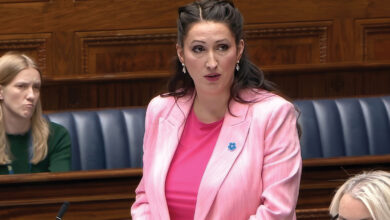Betting on Barnett? Lessons for Northern Ireland from Wales’ funding floor

The £3.3 billion “final offer” to restore devolution in Northern Ireland has made the Welsh Government’s Fiscal Framework a hot topic – not something that happens often, writes Guto Ifan, lecturer in politics and international relations at Cardiff University.
While overspending write-offs and public sector pay restoration are the headline parts of the deal, the “Welsh-style fiscal floor” will likely prove the most significant element over the medium term.
A funding floor was a longstanding clarion call in Welsh politics. The Holtham Commission’s report in 2010 estimated that relative spending need per person in Wales was approximately 115 per cent of England’s level.
At the time, funding per person had fallen below this, due to the so-called “Barnett squeeze”. Higher initial funding means that the same pounds per person change in funding as in England – provided by the Barnett formula – is a smaller percentage increase, narrowing the difference in funding over time.
However, post-2010 austerity measures and a slower-growing population led to relative funding diverging to around 120 per cent of England’s level (i.e. above the estimate of relative need). But the Welsh Government still wanted protection against the Barnett squeeze.
In 2015, the UK Government promised that funding would not fall below the 115 per cent level – a promise that never had an impact in practice.
This was quickly superseded by the introduction of a ‘needs-based factor’ as part of the 2016 Fiscal Framework Agreement. Increments in funding have since been multiplied by 105 per cent, slowing any convergence in relative funding. If funding per person ever falls to 115 per cent of England’s level in future, this multiplier will switch to 115 per cent.
Cardiff University’s Wales Governance Centre estimates that the needs-based factor has been worth £1.2 billion for the Welsh budget (around £390 per person) and £240 million for next year’s budget.
What might similar arrangements mean for Northern Ireland?
The Barnett squeeze has had a massive impact on relative funding levels in Northern Ireland since 2018. Barnett-based funding now appears to be below the Northern Ireland Fiscal Council’s estimate of relative need (of 124 per cent of England’s level). One-off, non-Barnett funding deals have just about kept spending above this level.
It is not entirely clear which version of Wales’ fiscal floor (the 2015 promise or the 2016 multiplier) has been offered in talks to restore Stormont. If a multiplier is introduced, it would likely be set at 124 per cent (rather than at a lower ‘transitional’ level as agreed for Wales).
The eventual impact on funding and relative spending levels is uncertain – it depends on assumptions of future spending growth in England and relative population growth.
We can safely say, however, that it would be a good deal compared to the status quo. It would stop further funding convergence down to England’s level, and over coming years would be worth billions of pounds in additional funding.
One-off political deals may boost funding in a given year. But perhaps the main lesson from Wales is that reforming underlying funding formula can prove a more significant and sustainable benefit in the longer term.
This article was co-written with Ed Poole, senior lecturer in politics and international relations at Cardiff University.





